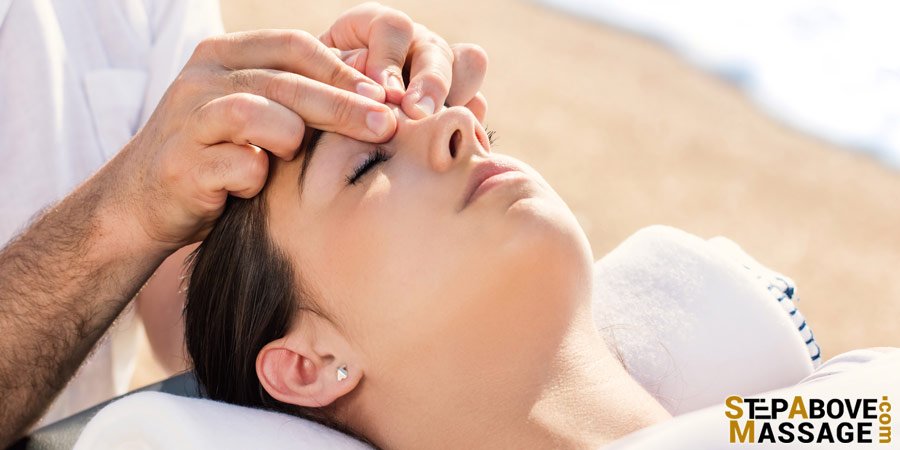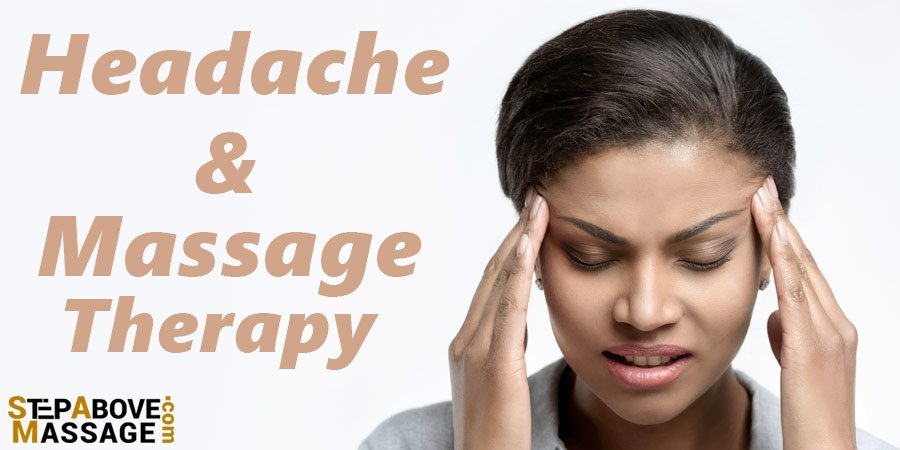Whether rooted in heredity, sicknesses, lifestyle habits, or environmental factors, headache is one of the most common problems of our everyday lives, and experiencing headaches, whether mild or severe, is an ordinary complaint made to general practitioners. The first thing a headache affected patient often requests is to have some kind of relief from his/her unreadable pain in this most sensitive body part.
However, there are also headache sufferers who prefer to have a quicker remedy at home. They may rush to get ibuprofen, aspirin, or any other over-the-counter provided medications from the medicine cabinet, or take refuge in several strong cups of coffee. There are also people who search for their massage therapists’ phone number and make a quick call to arrange a massage therapy session.
The last group have mostly experienced the miracles of the gliding movements of a massage therapists’ fingertips in alleviating their headache and stress. Even a short session of massage therapy has been proved to have remarkable improving effects on the pain you feel around your head. It can also be effective in preventing pain recurrence. However, in order to have a beneficial massage therapy session, the patient and the therapist should be fully aware of the cause of the pain and the headache type.
Common Types of Headache
Tension-Type Headache
One of the most common headache types is the tension-type headache. Tension-type headache can cause a tightness feeling in the head which is mostly mild and can be often easily treated by an over-the-counter pill. It is felt on both sides of the head and typically lasts about 30 to 60 minutes.
Tension-type headache has three sub-types based on the headache’s frequency. The first type is known as “infrequent episodic” that can occur once or a few times a month. The second type is “frequent episodic” which happens more, i.e. up to 15 times a month. The last type is “chronic headache” that occurs more than 15 times a month. Muscle tension and spams, Trigger points (TrPs) (also known as muscle “knots”), eye stains, TMJ (Temporomandibular joint) dysfunction, high level of stress or anxiety, hormonal or chemical changes, neck misalignment, dehydration, bone misalignment, or any other musculoskeletal imbalances can cause this type of headache.
Sinus headaches
Sinus headaches are usually caused by the accumulation and congestion of too much fluid and sometimes infection in the sinuses – air-filled spaces around the forehead, nose, and cheekbones. The symptoms of sinus headaches can be a runny nose, fever, ringing ears, and face swelling.
Traction-Inflammatory Headaches
This type of headache is rare but much more serious. It is generally caused by a tumor, stroke, or meningitis. It can lead to muscle numbness, difficulties in speech, and weak motor control.
Vascular Headaches
vascular headache is often displayed in a “pounding” pain which is more severe and longer than the pain caused by a tension-type headache – from a few hours to a few days! The main cause of this type of headache is unknown; however, swelled or tightened blood vessels are sometimes seen as the inception of the pain. Sub-types of vascular headaches are migraine, cluster headaches, and sinus headaches.
Migraine
Migraine involves blurred vision and at times the perception of auras or auditory hallucinations. It can also involve muscle numbness, speech difficulty, nausea, and vomiting. They can happen due to bright lights, neck misalignment, vascular problems, chemical or hormonal changes, high level of stress, neurological problems, blood sugar regulation, food or medication sensitivities, too much alcohol consumption, and too much or too little sleep.
Cluster headache
Cluster headache makes more men than women suffer from nighttime pains and its period can last for a few weeks to the entire season. And, each time the excruciating pain may last for several minutes to several hours. A cluster headache starts from somewhere around the eyes and spreads through one’s head, neck, and shoulders. Facial swelling, sweating, and redness are among the symptoms of cluster headaches.
In What Ways Can Massage Therapy Help different Types of Headaches?
Based on the headache type, massage therapy can use different techniques in order to reduce and eliminate headaches symptoms. A number of tested techniques which have had considerable effects on headache sufferers include:
Temporary Headache at office
Sometimes your headache starts to happen when you are at work or when you are at the office. just consider that works stress or heavy thoughts about your job position or work relations can cause a temporary headache and its completely depended on your feelings and workplace
some companies or organizations have scheduled monthly plans of corporate chair massage sometimes knows as mobile massage or on-site chair massage to reduce employees stress and problems like that for better efficiency and as we at the step above massage commonly do that for pretty much organizations we can grant its advantage
don’t forget that if your work is related to monitors or computers with sharp bright light screens, wear some kind of blue cut or blue control eyeglasses to both protect your eyes and prevent those kinds of temporary headaches at your office
Deep Tissue Massage
In deep tissue massage technique, the therapist uses sliding motions of his/her knuckles or thumbs in a focused way in order to induce a gentle pressure and reduce the pain in the treated area by releasing the tension and spasms in the muscles.
Trigger Point Massage
This type also applies direct pressure in brief intervals on somewhere around the eyes or at the temple. However, the therapist must definitely exercise caution regarding the pressure intensity and duration, as well as the exact area on which the pressure is applied.

How Massage Techniques Eliminate Headache Symptoms
In an effective massage session conducted by a professional massage therapist:
- Circulation is promoted: Sometimes, the spasms and pains are caused because of the tightened veins and muscles and consequently lack of proper blood circulation. Gentle massage pressures can manipulate the affected skin, muscles, and bones, and therefore increase blood flow and circulation in the affected area. More oxygen-rich blood circulation can help in alleviating the pain.
- Pain is decreased from trigger points: Trigger points are absolutely tender and hyperirritable tissue areas that can spread pain all over the body especially one’s head and neck. An expert massage therapist knows how to apply Trigger Point Therapy or Neuromuscular Therapy (NMT) in order to reduce pain in the trigger points and also other affected parts.
- Muscle tension/spasms are relived: One of the most important groups of muscles in our bodies are the neck and suboccipital (base of the skull) muscles, which actively work for long hours to balance your head on top of your spine and control your head movements, while suboccipital muscles often do not receive the amount of rest they need to be recovered. If these muscles are strained or tightened, they can cause intolerable pains around your neck and head where they are linked to. Massage therapy can soothe their tightness by repetitive skin and muscle manipulations in the painful area. As a result of these muscles’ relaxation, other muscles which are attached to the suboccipitals are eased and the pain which has scattered all through the head muscles, including the eyes, can be relieved.
- Special hormones are regulated: It has been proven that massage therapy can lower the levels of Cortisol, also known as the stress hormone. It actually not only reduces Cortisol but also increases Endorphin – the happiness hormone – and stimulates the Para-Sympathetic Nervous system which helps to relax the muscles even more. Other than comforting the pain, these balanced hormones can enhance your sleep quality which again helps to alleviate your headaches, as well as their intensity, duration, and frequency.
Final Thoughts
If carried out by an expert, massage therapy can be a great non-pharmacological treatment in order to alleviate the headache pains and symptoms. Some benefits include reduction of depression, anger, anxiety, perceived pain, tension, and therefore medication use. Moreover, the patient’s wellbeing will be higher as he/she will experience less pain, with less intensity and less frequency.
All the same, each body pain is a warning that some part of your body does not work well, and finding the cause will be specifically important if the warning source is in your head. If you frequently suffer from chronic pains around your head, neck, and shoulders, you should definitely visit your doctor first in order to be examined for the main problem and obtain the necessary treatment. In addition, it is also recommended that you consult with your doctor about receiving a few sessions of massage therapy and if you are located around Raleigh, Durham or chapel hill you can set your first appointment with us with an incredible introductory offer











I hate headaches! Thank God for massage therapy! It fixes me up every time . I don’t use aspirin or any drugs to help get rid of the pain. You made great key points! People get your MASSAGES and stop being in pain! 😁